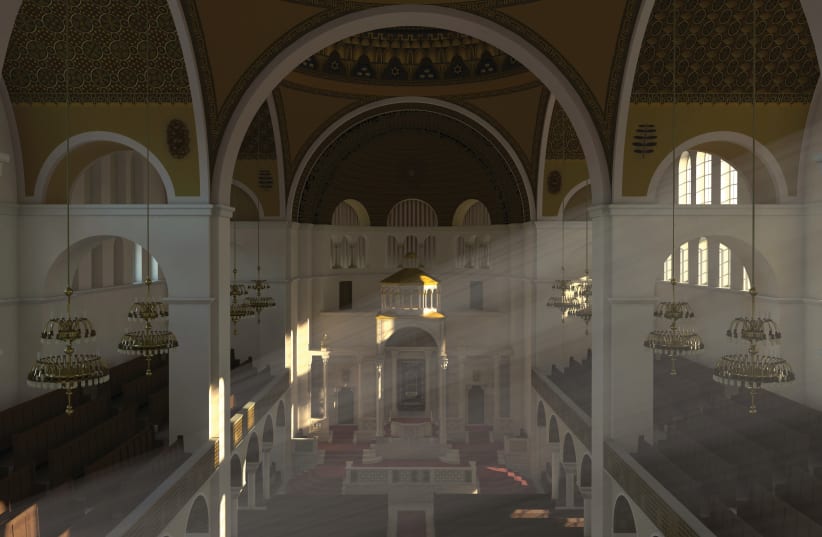In the summer of 1984, I had the opportunity to travel through Europe on a special program sponsored by the Simon Wiesenthal Center and Yeshiva University of Los Angeles. Of the many memories I have of the trip – including walking through the concentration camp in Dachau, not far from Munich – one stands out. It was in the Austrian countryside, in a small synagogue that had been destroyed during Kristallnacht in 1938.
The synagogue had been restored and renovated, adorned with a beautiful hand-painted interior and an ark covered in gold. Sadly, this was no longer a place of prayer and study but a museum dedicated to the memory of the victims of the Nazi genocide in the small town where the synagogue was located.
As I was reading Sir Martin Gilbert’s Holocaust Journey: Travelling in Search of the Past (1997), the memory of that synagogue turned museum came back to me. Gilbert, official biographer of Sir Winston Churchill and professor of Holocaust Studies at University College in London – he died in February 2015 – was a prolific author whose works chronicling the Shoah have successfully humanized a tragedy that might otherwise overwhelm us by the catastrophic number of those who perished.
Despite the vast scope of the Nazi genocide, Gilbert’s own chronicle of a journey through Europe accompanied by his graduate students in the summer of 1996, is sensitive and fact-filled, never forgetting the long epoch of Jewish history that preceded the disaster of 1933-1945.
Gilbert’s vast store of knowledge is impressive. On almost every page of Holocaust Journey, we are reminded that there was a thriving Jewish history in Europe before the Shoah. Gilbert’s prowess (evident in such works as Final Journey, Atlas of the Holocaust, and The Day the War Ended) is displayed in his descriptions of both the city of Prague – with its illustrious Jewish history, including the legend of the Maharal and the “golem” – and the tragedy of the Theresienstadt ghetto, a “model” settlement that served as a transit camp to “resettlement in the East,” the euphemism for the extermination centers of Poland.
Throughout the two-week trip, Gilbert read accounts of survivors of the death camps. The accomplished historian also recounted the Jewish journey toward death in cities and small towns, whenever the Gilbert-led group stopped at these places on their journey. In its travels, the group traced routes victims took to their death.
One of the most haunting accounts is of two men who escaped from Auschwitz-Birkenau and relayed the first comprehensive information of the death camp to the outside world. The book contains sections of many such memoirs, from those written by Primo Levi to others by lesser-known survivors.
In his Atlas of the Holocaust, Gilbert includes a map that indicates the age of the Jewish communities destroyed by the Germans and their collaborators, some dating back almost 2000 years. Holocaust Journey is a personal encounter with the shattered remnants of European Jewry. It leaves the reader with a sense of a terrible loss: Not only were the Jews of Europe destroyed by the Nazis, but total cultures were obliterated in the destruction. The landscape of Europe is, alas, dominated by Jewish institutions, such as synagogues, which have been converted into museums and memorials. What life once thrived and flourished is gone and only remains in memory.
The writer is a rabbi, essayist and lecturer living in West Palm Beach, Florida.

